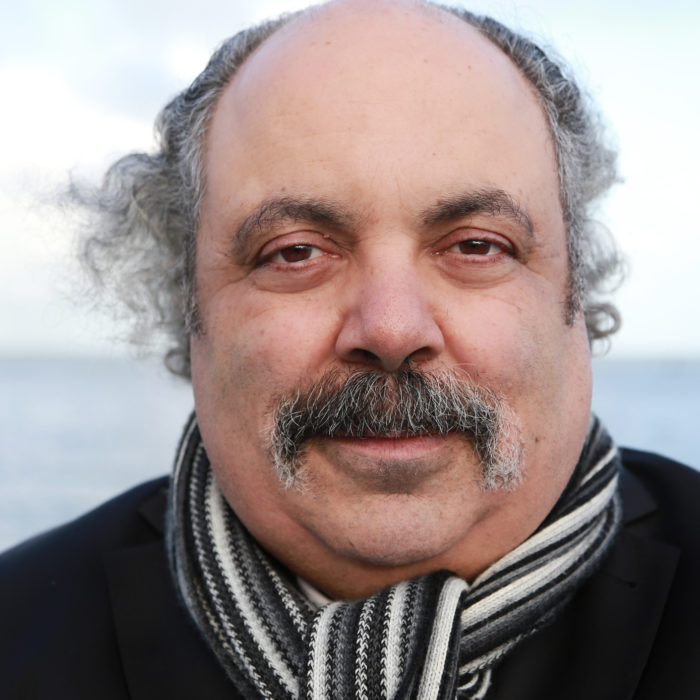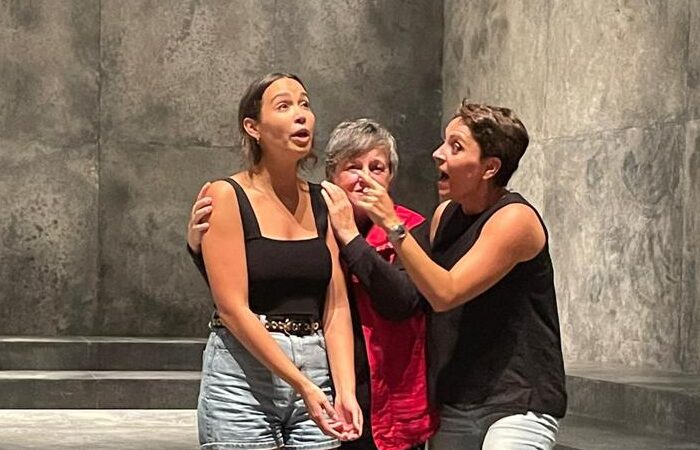
Page to Opera Stage: Voltaire’s & Bernstein’s ‘Candide’ Exemplifies (the Best of) All Possible Worlds
By Carmen Paddock“Page to Opera Stage” looks at stories – real-life or fiction, old and new – that have inspired operas, and the ways these narratives have been edited and dramatized to fit a new medium. This month, we look at Voltaire’s 18th century satirical novel “Candide”, which inspired Leonard Bernstein’s 20th century masterpiece.
The prolific output of French historian, philosopher, satirist, and poet François-Marie Arouet – better known by the name he used to escape censorship, Voltaire – is almost overwhelming. Throughout the mid-18th century, he earned many followers and more enemies through his criticism of the Catholic Church and belief in freedom of speech and separation of church and state. Ahead of his time in more ways than one, it is unsurprising that his most famous novel remains readable and relatable in the 21st century.
The success of “Candide” (first published in 1759) was through unauthorized copies and translations, as state and church censorship curtailed many attempts at official publication. Nonetheless, its popularity led to several Voltaire-authorized additions, including a 1761 version with substantial additions. After this later version was included in Cramer’s 1775 anthology of the philosopher’s works, it has become the definitive text.
“Candide” follows its titular hero from an illegitimate yet comfortable upbringing in a fictionalized barony of Westphalia. Banished for his love of the beautiful heiress Cunegonde, he experiences a litany of near-death experiences as he strives to be reunited with his beloved – who is fairing even worse. But as both have been taught by the indestructible Doctor Pangloss, by reason of this world being the only world, it must be the best of all possible worlds. Eventually, after several continents of adventures, murders, mutilations, rapes, and swindlings, they are reunited and can live quietly – perhaps happily – ever after.
“Candide” combines the serious themes of a bildungsroman with the fast-based, erratic world of a picaresque novel, drawing the best qualities from two popular genres of the day. It deals with the grim and gnarly subject matters in an incongruously straightforward way, making the litany of abuses almost everyday but never trivialized. “Gulliver’s Travels” by Jonathan Swift, which predates “Candide” by 33 years, seems to have been influential in Voltaire’s writing, and a satiric scepticism of Gottfried Wilhelm Leibniz’s insistence on God’s benevolence in all situations and hardships informs the book’s political bent. This disagreement is worked in through Voltaire’s own reactions to the Seven Years’ War and 1755 Lisbon Earthquake and Fire, which killed between 12,000 and 50,000 people. It is hard to reconcile such senseless death with a benevolent Creator – and Voltaire, true to his freethinking mentality, leaves this distinction ultimately up to the reader.This combination of irreverence, eternal relevance, and opportunities for dramatic invention captivated American conductor and composer Leonard Bernstein.
His first attempt at “Candide,” with a libretto by blacklisted screenwriter Lillian Hellman, premiered in 1956 – just shy of 200 years since the novel’s publication. Its reception was mixed, largely due to an over-serious libretto. Bernstein revisited the work in the ensuing decades, tweaking the music and libretto with each revival.
In 1974, Bernstein returned to the project in earnest with a new book by Hugh Wheeler, which hewed closer to Voltaire’s original novel while still necessarily condensing some of Candide’s exploits and misfortunes (a necessity for a light, operetta-feeling piece rather than a convoluted epic). A host of librettists joined the efforts of adaptations – primary credit goes to Richard Wilbur, but John Latouche, Dorothy Parker, Lillian Hellman, Stephen Sondheim, John Mauceri, John Wells, and Bernstein himself. Surprisingly, the result is not a “too many cooks” scenario – the words, largely drawn from Voltaire, propel the story compellingly and retain the author’s original levity.
In 1988, a production was launched at Scottish Opera and performed the next year in London that saw Bernstein’s intentions for the work realised. This version is largely the one performed today.
With a novel of such eventfulness and a convoluted production and revision history, it is useless to examine every difference in “Candide.” Instead, three key areas will be examined.
Narration on Stage
Voltaire’s voice is strong throughout his novel; by turns sardonic, cheeky, and startlingly sincere, he guides the reader through Candide’s outlandish and outrageous adventures in an almost businesslike fashion. This matter-of-fact narration contrasted against the larger-than-life coincidences and tragedies that befall Candide cements the author’s clear-eyed mocking of religious, governmental, and social institutions while portraying his characters sympathetically, not mawkishly.
Any version of “Candide” without this narration would feel hollowed out, and Bernstein retains this signature voice by giving the leading baritone the dual role of Pangloss and Voltaire himself. The performer opens as the author and transitions at points into the somehow indestructible teacher.
Combining Voltaire and Pangloss is amusing through a historical lens, considering that Voltaire was satirically refuting the Leibnizian optimism that Pangloss personifies. However, it makes for fantastic theatre; Pangloss’ reasoning why the ensuing disasters and cruelties must still be “the best of all possible worlds” is continually contrasted to the stage action, ramping the dramatic irony sky high.
Musical Odds
Voltaire presents Candide as the laughable optimist when the story opens, the man who cannot see reality for what it is until the world beats him down with its brutality and senselessness. This portrait evolves as Candide develops a more rational, realistic view, combining optimism with fatalism. It is a gently mocking portrait that keeps readers’ sympathies with the unfortunate hero.
Bernstein maintains this view with the help of Voltaire’s/Pangloss’ narration. He also captures his hero’s fundamental state of odds with the world musically. Candide often sings the harmonies – most often the dominant fifth – while other characters sing the tonics. At the end of “The Best of All Possible Worlds” (a quintet built around C Major), Candide sings the final note on G while the three other students – Cunegonde, Paquette, and Maximillian – sing on C. Candide’s trusting optimism shines through the tenor line, while his slightly worldlier comrades with clearly defined social stations fit in neat tonic harmony.
Make our Garden Grow
The endings of each version of “Candide” hit different notes. Both of Bernstein’s operas radically condense the post-Venice portions of Voltaire’s novel and remove the Orientalized stereotypes in the characters encountered as Candide, Cunegonde, and Pangloss settle into a quieter life. But this is necessary theatrical condensation; Cunegonde’s role provides the differing feature. In the novel, she does not swindle Candide in Venice, having made her way to Istanbul by Candide’s arrival at the Carnival. By the time the two reunite, Cunegonde is described as hideously ugly but Maximillian still forbids her marrying anyone not of noble birth. Candide, spurred by spite, marries her regardless, and the pair continue his quest for some meaning and sense in life. His revelation that they must “make our garden grow” is spurred in response to Pangloss and his conversations with their new neighbors in their boring, yet blissfully normal, new life.
In the opera, Candide’s disillusionment is immediately sparked by a masked Cunegonde attempting to swindle him out of his last money in Venice (in Cunegonde’s defense, Candide is masked too so she is unaware of her target!). This leads to some period of reflection on the hero’s part – a week of silence in the revised 1989 “Final Revised Version.” This betrayal is the ultimate lynchpin in Candide’s worldview, transitioning both optimism and pessimism through a realist lens where one’s work and effort in the face of random cruelties is the way forward. Only then can he ask Cunegonde to marry him.
“‘Candide’ is only a ‘Hamlet’ and a half long,” says Philip Littel in his introduction to the 1918 translation. This delightful observation belies the great emotional depth each work holds, and Candide’s breath of events and locations certainly outclasses many novels several times its length. Bernstein’s necessary condensation for the operatic form nonetheless holds these themes, explorations, and satire central to Voltaire’s timeless tragicomedy. While Pangloss’ theory does not hold water in practice, a world where we have two excellent versions of this little tale could indeed be said to be the best of all possible worlds.
While there are many English translations of Voltaire, a public domain translation of “Candide” is available at Project Gutenberg. The revised Wilbur libretto Bernstein employed, with a book by Wheeler, is available at music bookshops and libraries.
Categories
Special Features

